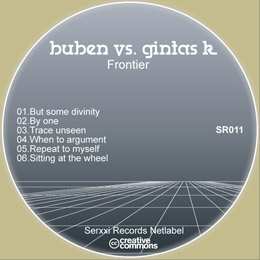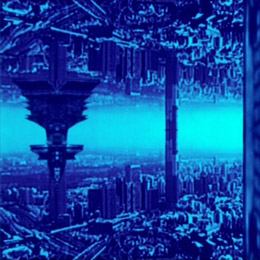
Closing night of the 6th Sound and Music Computing Conference in Passos Manuel, Porto. Several performances happening in the main room and Crónica HDJs Miguel Carvalhais and João Cruz at both the bar and club areas of Passos Manuel. Next Saturday, the 25th. All night long.
“Erotikon†reviewed by Boomkat

Jorge Mantas follows up his Cronica debut album Musicamorosa with this brand new selection of micro-drones and digitised textural ambience. As with the last one, Mantas’ leanings toward befuddling conceptual presentation obscures his point slightly – the explanatory blurb surrounding his last album strived to link his music to Proust, while this time around the only context you get is a salacious chunk of prose about some saucy business or other whose link to the music remains abstract and intangible. Whatever the themes presiding over this record are intended to be, the music is full of mystery and wistfulness. In its early stages the album delivers piano tones glistening brightly through the filtered static on ‘Aysha’ and entangled signals stewing in the watery tonalities of ‘Blumarine’. On ‘Alba’ Mantas incorporates an excerpt from the 1860 recording of ‘Au Clair De Lune’, thought to be the very first audio document of a human voice. Uncannily, the ruptured, hauntingly broken sound of the recording chimes with the ethereal qualities running through Mantas’ music.
via Boomkat
“Lovely Banalities†reviewed by D-Side

S’il utilise principalement l’électronique, le Lithuanien Gintas K, n’est pas, comme d’autres artistes oeuvrant dans la sphère IDM, réfractaire au monde extérieur. Au contraire, dès lors qu’il décide de faire de Lovely Banalities une sorte de journal de sa vie quotidienne, c’est bien dans celui-ci qu’il tire la matière de son travail de retraitement, enregistrant une masse de field recordings un dimanche après-midi d’été venteux dans sa ville de Marijampole, avant de les passer au filtre de la machine. Largement méconnaissables, ces évocations du quotidien le plus ordinaire, utilisées largement en intermèdes entre les morceaux, n’en infusent pas moins la totalité de Lovely Banalities qui, sous, ses glitches, ses glissements, ses craquements et ses souffles, respire en permanence de cette brise venue du monde réel, prenant à parti l’univers informatique pour le rendre faillible et incertain. Et lè où Gintas K réussit parfaitement son enterprise, c’est quando Lovely Banalities, sous ses dehors d’évocation quotidienne, presque “superflue”, se fait plus complexe et dramatique que nombre d’albums réalisés dans l’austérité d’un concept aliénant. Jean-François Micard
“Lovely Banalities†reviewed by aemag

Feldaufnahmen heutzutage nach eigenem Gutdünken zu verarbeiten ist lange kein Kunstgriff mehr, umso erstaunlicher mutet da Gintas K’s Titel von »lieblichen Banalitäten« an. Schätzt der eigenen Künstler seine Musik so gering ein, oder verweist der Name des Albums eher auf das vielbeachtete Verarbeiten diffuser Außengeräusche hin? Banal ist die Musik sicher nicht, dazu steckt zuviel Dynamik und Differenz in den Aufnahmen.
Während der Anfang recht lärmig beginnt, wird ab Stück 3 eher klar, wohin es gehen soll. Teilweise an Marc Behrens reduzierte Musik erinnernd, wird kein klanglicher Kniff ausgelassen, dem zugrundegelegten Material die nötige Bearbeitung zukommen zu lassen und sich dabei auch durchaus aus der üppigen Kiste zeitgenössischer experimenteller Ausdrucksformen zu bedienen. Kurgefasste Delays und Feedbacks bilden die sonore Unterlage mancher der 14 kurzweiligen Titel. Chords werden hinweggerafft und neu zusammngesetzt, Noiseinfluenzierte Versatzstücke werden durch digitale Berarbeitung zu verschmierten und klitterigen Klangmauern. Teilweise schwingt ein gewisser reduzierter Gestus mit, der sich auch in der Auswahl der klanglichen Bearbeitungsmöglichkeiten erschöpft. »Lovely Banalities« als Stück Nummer 10 wirkt da wie ein schöner Moment, der alles andere als banal wirkt- weil das Album sich einfach selber nicht zu ernst und wichtig nimmt. 5/5
via aemag
“Ification†reviewed by Goddeau

Zuiverheid is een betrachting van velen en de oorzaak van onnoembaar en talloos leed in deze wereld. In een ijdele poging de wereld te redden en te zuiveren van al wat onrein is, heeft menig ideoloog diezelfde wereld in een stinkende hel getrokken. De weg erheen is immers geplaveid met goede voornemens.
Onder het pseudoniem Pure tracht de Weense Peter Votava de zuiverheid in de muziek in ere te herstellen. Votava, die sinds 1992 actief is als muzikant en een slordige dertig albums op zijn naam staan heeft, had zes jaar nodig om een opvolger voor Noonbugs uit 2003 te voltooien. Maar de zware bevalling die Ification (het woordspel is ook voor niet-genieën duidelijk) werd, loont. Het album is een hommage aan een beklemmend zuiverheidsideaal waarbij een minimum aan klanken gebruikt wordt.
Vuur is het wapen bij uitstek voor een ritueel, een visie die “Fire†onderschrijft. Het nummer is volledig opgebouwd uit (gemanipuleerde) metalige gitaarklanken die zich een weg doorheen de track snijden. Maar ook het desolate “After The Bomb†(met Martin Brandlmayr van Radian een eerste maal op drum) weet te imponeren. Het nummer evoceert een wereld in as, desolaat en verlaten, zelfs Brandlmayrs minimale drumslagen weten geen tekenen van leven op te roepen.
Het valt nauwelijks te bevroeden dat “Approximation†er in slaagt nog meer onherbergzame streken op te roepen. De song laat vervormde blazers (of wat daarvoor door moet gaan) een dodenmars schallen doorheen een leeg en kil universum. De klankschakeringen zijn net als in de vorige nummers nauwelijks merkbaar al staat daar opnieuw een sfeerschepping tegenover die zijn impact net dankt aan het ontbreken van een noemenswaardige variatie.
De enige echte variatie bevindt zich op albumniveau. Hoewel alle songs onmiskenbaar vanuit eenzelfde gevoel van leegte ontstaan, zoeken ze allen hun eigen weg binnen het emotioneel sterk gekleurde vacuüm. Zo laat “Blind Fight†een ander geluid horen dan de vorige nummers, zonder aan de essentie van de plaat te verzaken. Ditmaal kiest Pure voor een eigenzinnige interpretatie van nauwelijks hoorbare glitch-klanken en een aanslepende drone waarvan de dreiging niet te onderkennen valt.
“Sonomatopeia†(de titel is alweer geen doordenker) roept de hulp in van Alexandra Von Bolz. Haar vocale capriolen worden volledig geabsorbeerd door een nummer dat Einstürzende Neubatens ingetogen oude werk (niet het luidruchtige staalplatengedoe) koppelt aan de zoemende geluiden van oude elektronische apparaten. Ook de inbreng van Anke Eckardt in het zich voortslepende “End†is aanvankelijk nauwelijks merkbaar. Gestaag laat de song baslijnen toe zonder het overheersende gevoel van een naderend onheil te weerleggen.
De donkere electro van “End†krijgt een treffend weerwoord in “Iron Sky†dat zich verlaat op de diensten van Brandlmayr en Von Bolz. De combinatie van ruis, stotterende drumslagen, dreigende klanken en bezwerende vocalen zorgt voor een aparte track die zich net zo goed als een pastiche op velerlei pseudo-intellectuele electro laat kennen als dat het er volwaardig en ironieloos deel van uitmaakt. De schijnbare kakofonie en bij elkaar geklutste inbrengen worden door Votava tot een werkbaar geheel gesmeed dat ook na afloop van het nummer blijft nazinderen.
Pure brengt op Ification een ode aan (de gevolgen van) een desastreuze zuivering, een reinigingsverlangen dat gelooft in nietsontziende maatregelen en alles wegvaagt wat ook maar een hint van verstoring in zich kan dragen. En zoals alle ideologieën die louter in zwart-wit handelen heeft ook Ification een hypnotiserende schoonheid die, blind voor de gevolgen, lonkt en verleidt. Jurgen Boel
via Goddeau
“Ification†reviewed by Loop

Peter Votava aka Pure Austrian native and based in Berlin has been active since 15 years releasing over 30 releases on CD and vinyl under different monikers and collaborations in labels such as such Mego, Staalplaat, Praxis, and his own labels dOc, Atmosfear, Loop and Sub/Version. Portuguese base Cronica Electronica label released in November 2008 his fourth full-length album “Ificationâ€.
On this CD collaborate Christoph de Babalon on sample guitar on the opener “Fireâ€, Austrian Radian’s member Martin Brandlmayr on drums on “After the bomb†and “Iron Sky†and Alexander von Bolzn, screms on “Sonomatopeia†and “Iron Sky†and Anke Eckardt, bass guitar on “Endâ€. These collaborations based the compositions for this album.
The opener “Fire†is a shocking strummed sample guitar of de Babalon. The unsteady atmosphere of “After the Bomb†reveals a dark ambience and underrated splashing drums. Stunning!
“Approximation†it’s a powerful classic string section, low horns and deep into a mysterious world.
“Night Flight†continuous with murky corridors that synthetic walls built. Sonomatopeia brings an abstract ambience and lament screams.
“End†is a long drone piece made out of fragmented digital sounds and “Metal Sky†that close this record, shows Brandlmyr on drums over saturated bass lines giving to this track a rock like tune. Guillermo Escudero
via Loop
Gintas K and Buben release “Frontier†in Serxxi (free download)

A free download EP with six tracks from Gintas K and Vladislav Buben is now available through the Serxxi Records Netlabel.
“Berlin Backyards†reviewed by Loop

Swiss soundartist Gilles Aubry explores field recordings with organic and synthetic sounds of Berlin backyards.
It’s amazing the many and the variety of sonorities produce by the city that can be the place where one lives or in other words, noises that citizens are responsible of; electric hum, metal beats, mechanic and repetitive movements, drones, human voices that get an especial meaning drawing the listener to a reflection, noises of people, trashcans moved from one place to another and other undistinguished sounds.
This interaction reveals both harmonic and dissonant ambience of the city that could be the one where we live but that for us becomes transparent in everyday life, and for this Gilles Aubry configure us a sound structure. Guillermo Escudero
via Loop
“Praxis†reviewed by Loop.cl

Cem Güney is a Turkish-born sound artist who started within the jazz music field playing the trumpet. He studied music in California and he’s a DJ since 1994. “Praxis†is the debut album on Portuguese Cronica Electronica label, furthermore a compilation appearance on “V/A Mus….câ€, (Cronica, 2008).
Güney works both synthetic and recorded sound as source material which processed by software. “A Phonetics Theme†opens with a wide range of recorded voices. “Impulse†is built out of tiny digital sounds, while “Undulations (dedicated to Janek Schaefer)†is a loop of a string section that changed into flickering tones penetrating dark moods.“Factitious Phobia†is a combination of electroacoustic sounds, recorded voices and underrated Middle Eastern music. The piano deliver harmonic notes which sound quite strange alongwith such abstract sounds. “Praxis†is composed by digital microsounds, some of them Morse like and unidentifiable snippets.“Behold Now Bhikkus, The Sounds of Nada Yoga†comprised the meditation through sound and there are some vowels with especial characteristics and meanings worked by Güney as processed voices. Guillermo Escudero
via Loop.cl
Ran Slavin’s “Organic Urbanic†screening at the Israel Museum of Art

Tonight.
